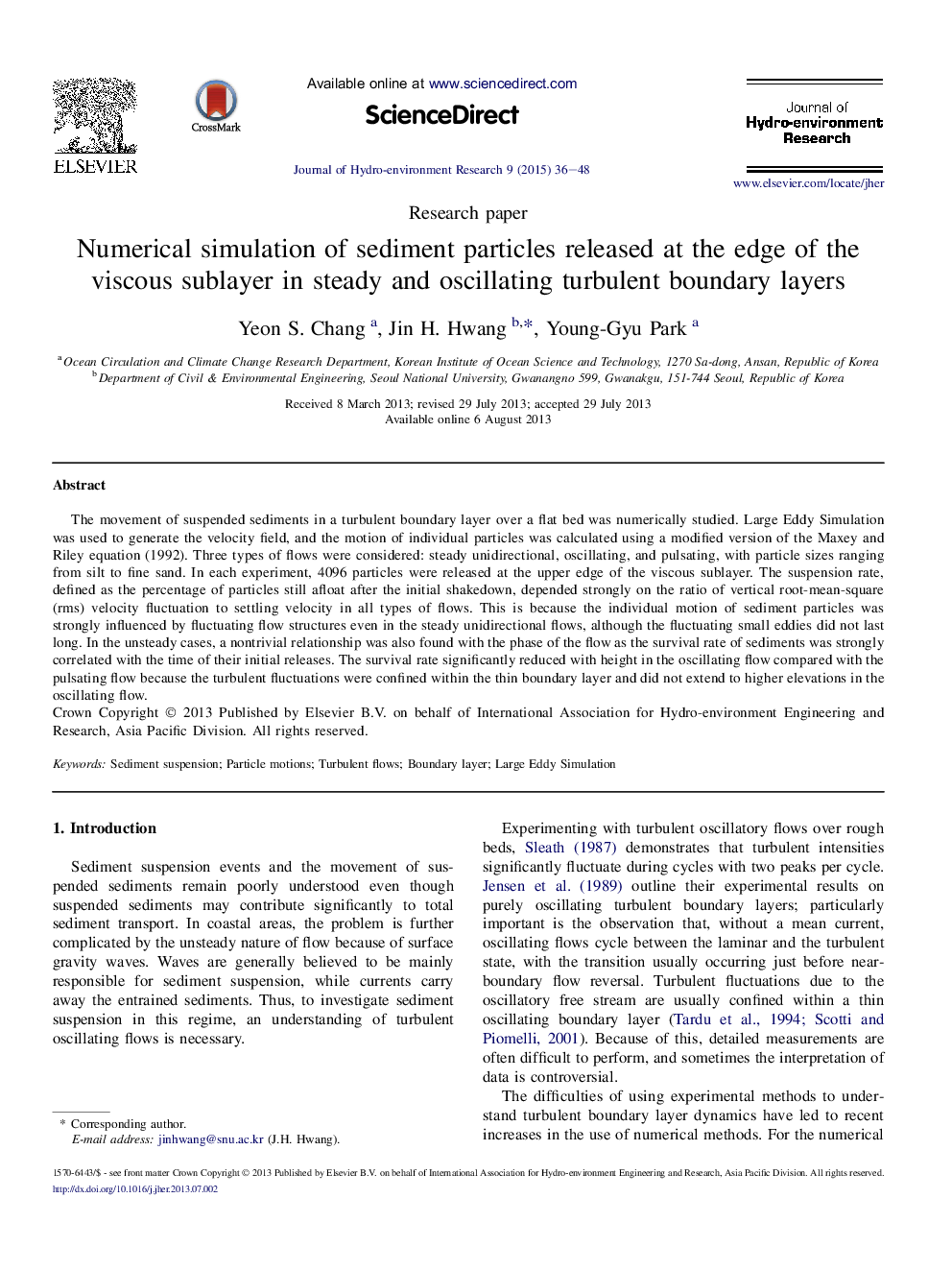| Article ID | Journal | Published Year | Pages | File Type |
|---|---|---|---|---|
| 4493733 | Journal of Hydro-environment Research | 2015 | 13 Pages |
The movement of suspended sediments in a turbulent boundary layer over a flat bed was numerically studied. Large Eddy Simulation was used to generate the velocity field, and the motion of individual particles was calculated using a modified version of the Maxey and Riley equation (1992). Three types of flows were considered: steady unidirectional, oscillating, and pulsating, with particle sizes ranging from silt to fine sand. In each experiment, 4096 particles were released at the upper edge of the viscous sublayer. The suspension rate, defined as the percentage of particles still afloat after the initial shakedown, depended strongly on the ratio of vertical root-mean-square (rms) velocity fluctuation to settling velocity in all types of flows. This is because the individual motion of sediment particles was strongly influenced by fluctuating flow structures even in the steady unidirectional flows, although the fluctuating small eddies did not last long. In the unsteady cases, a nontrivial relationship was also found with the phase of the flow as the survival rate of sediments was strongly correlated with the time of their initial releases. The survival rate significantly reduced with height in the oscillating flow compared with the pulsating flow because the turbulent fluctuations were confined within the thin boundary layer and did not extend to higher elevations in the oscillating flow.
